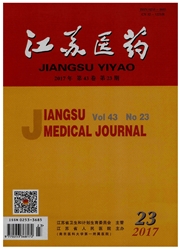

 中文摘要:
中文摘要:
目的比较Schatzker分型和三柱分型在胫骨平台骨折治疗中的临床意义。方法应用Schatzker分型及三柱理论分型方式分别对111例胫骨平台骨折患者进行分型。通过比较术中出血量、手术时间、术后骨折愈合时间及其Lysholm评分和美国特种外科医院膝关节(HSS)评分情况,综合分析两种不同分型在胫骨平台骨折治疗中的临床意义。结果111例患者获随访9—33个月,骨折愈合时间12—18周,Lysholm和HsS评分分别为80.O-94.0分和79.O-95.0分。三柱骨折分型与手术时间和术中失血量呈显著相关,Pearson相关系数分别为0.86和0.93(P〈O.01);Schatzker骨折分型与手术时间和术中失血量呈低相关性,Pearson相关系数分别为0.30和0.45(P〈O.01)。结论综合运用三柱分型不仅降低漏诊可能性,还能有效评估术中情况。
 英文摘要:
英文摘要:
Objective To compare the clinical significance of Schatzker and three-column classification in the treatment of tibial plateau fracture. Methods A total of 111 patients with tibial plateau fracture was classified by Schatzker and three-column classification, respectively, which was then evaluated by comparing intraoperative blood loss, operation time, fracture healing, scores of Lysholm and HSS. Results The patients were followed-up for 9 to 33 months,which showed that the healing time of fracture,Lysholm score and HSS score of 111 patients were 12 to 18 weeks,80. 0-94.0 points and 79.0-95.0 points, respectively. Three-column classification was significantly correlated with the operation time and amount of intraoperative blood loss with Pearson correlation coefficients of 0. 86 and 0.93 (P〈0.01), respectively. There was a low correlation between Schatzker classification in the operation time and amount of intraoperative blood loss with Pearson correlation coefficients of 0. 30 and 0.45 (P〈0. 01 ), respectively. Conclusion The comprehensive use of three-column classification can not only reduce the possibility of miss diagnosis, but also efficiently assess the condition during operation.
 同期刊论文项目
同期刊论文项目
 同项目期刊论文
同项目期刊论文
 期刊信息
期刊信息
